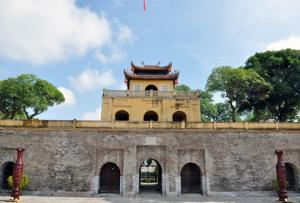UNESCO: From Heritage to Cultural Park

The UNESCO-recognized Thang Long Imperial Citadel in ${bigcity_Hanoi:"Hanoi"} will be transformed into a cultural and historical park. This, according to the capital city government which even presented a plan on the proposed project.
Based on the plan, the new park will cover more than 45,000 square meters. This includes over 13,000 square meters solely for the purpose of archaeological exhibition. The plan also stipulates that none of the construction works within the site will exceed five meters in height. Moreover and importantly, the remains will be preserved in an underground glass display.
Even after the construction is completed, archaeological research will go on. In fact, it will be open to the public. An architectural contest will even be conducted on the best design for the conservation of the heritage site. This is according to Nguyen Thi Bich Ngoc, vice-chairwoman of Hanoi’s People’s Committee.
Thang Long Imperial Citadel was first discovered in late 2002 during excavation work to build a new national assembly in Hoang Dieu Street. It was part of a citadel system built in the 11th century that included the Dai La Citadel, a defensive barrier with a complete dike system; and the Forbidden City, where the royal family resided.
Since excavation started on the area, scientists found evidence of several dynasties as old as the seventh century: Ly Dynasty, Tran Dynasty, Le Dynasty, and Nguyen Dynasty. They also discovered artifacts from the 7th and 9th centuries.
Thang Long Imperial Citadel was recognized as a World Heritage Site by UNESCO in 2010. But transformation of the site into a cultural park needs to catch up with the ongoing construction of the new National Assembly building nearby expected to be finished next year, according to Deputy Construction Nguyen Dinh Toan.









